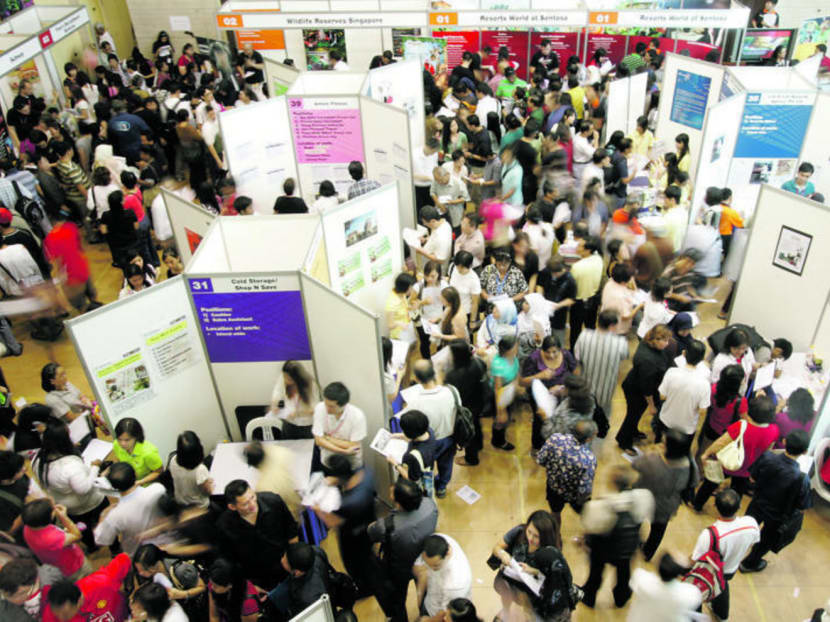Singaporeans continue to shun non-PMET jobs
SINGAPORE — Jobs in certain sectors — among them positions in nursing and in the services industry — continue to be shunned by locals, as the number of job vacancies that have gone without takers for at least half a year reached its highest level since 2009.

Job seekers attend a service industry job fair organised by North West Community Development Council. TODAY file photo
SINGAPORE — Jobs in certain sectors — among them positions in nursing and in the services industry — continue to be shunned by locals, as the number of job vacancies that have gone without takers for at least half a year reached its highest level since 2009.
About four in 10 job openings — or 25,860 vacancies — go unfilled for at least six months, showed the Ministry of Manpower’s (MOM) report on job vacancies released yesterday. Nearly seven in 10 vacancies — totalling 41,980 — are vacancies that are tough for locals to fill, employers say, with unattractive pay, a preference for a shorter work week, physically strenuous job scopes and shift work among the reasons putting off job seekers. Non-PMET (professionals, managers, executives and technicians) jobs formed the majority of such openings, in particular positions for service and sales workers, cleaners and labourers.
The labour market will continue to favour local workers for the rest of the year and beyond, given the restrictions on hiring foreign manpower — they can expect offers of higher wages, more opportunities and can be more selective in their choices, economists told TODAY. However, they cautioned, companies may eventually end up shutting down and moving to locations with lower costs and fewer manpower constraints.
The overall number of job vacancies stands at 67,400 as of September last year, also the highest since 2009. However, after adjusting for seasonality, the job vacancy rate — the proportion of jobs that go unfilled — edged down slightly to 2.9 per cent as of September, from 3.1 per cent in the previous quarter.
DBS economist Irvin Seah said the foreign worker labour crunch in both the low-wage and white-collar sectors has created problems for employers, who find it difficult to fill vacancies left behind by foreigners, as these are jobs Singaporeans shun to begin with.
“There is essentially a mismatch in the labour market. It has been happening for the last two years and it will continue to persist going forward, as long as those measures to cut foreign labour remain in place,” he said.
But CIMB Research economist Song Seng Wun said Singapore remains an attractive location for businesses, especially for the service industry, as they can tap the region’s growth and ride on the rising wealth and spending here. “Singapore continues to generate enough opportunity and job creation, especially in the services side,” he said. “The question is getting residents interested in some of the segments, that could mean a lot of time (to be invested) and a lot more money.”
The MOM found that the bulk of vacancies comprised service and sales positions, which made up 25 per cent of total vacancies, or 15,330 places. These includes positions such as shop sales assistants, security guards and waiters. This was followed by vacancies for associate professionals and technicians, which made up 19 per cent, and professionals, which made up 14 per cent.
The bulk of vacancies in the services industry are for jobs in community, social and personal services, which reflected the expansion in childcare and pre-schools, healthcare and tertiary institutions, the MOM said.
UOB economist Alvin Liew said businesses would need to restructure and adopt more new technologies to cope with the crunch. Citing the food and beverage industry, he said some companies may have to forgo service-orientation and venture into automated processes, such as getting people to collect food themselves, using tablets to order or employing a fast-food concept.
CORRECTION: In an earlier version of this report, we stated that the job vacancy rate was 2.9 per cent after adjusting for inflation. This is incorrect. Job vacancy rates are adjusted for seasonality. We apologise for the error.






